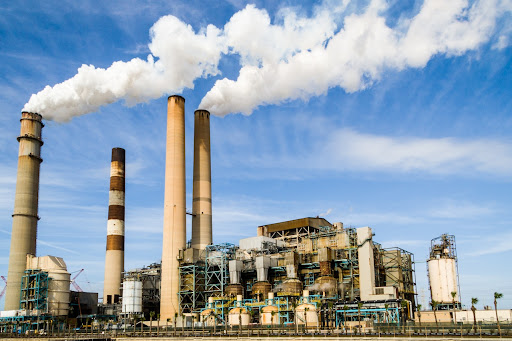In the business world, the roles of CEO and owner are often discussed and debated. The question of who holds more responsibility in a company- CEO vs owner -frequently arises.
This debate is crucial for understanding the dynamics and structure of any business, from small startups to large multinational corporations. Understanding these roles can also shed light on the challenges faced by both positions.
In this article, we will explore the responsibilities of CEOs and owners, comparing their duties and the extent of their influence on the company’s success.
Table of Contents
Who is a CEO?
A CEO, or Chief Executive Officer, is usually the top executive in a company. They make big corporate decisions, oversee operations and resources, and serve as the main link between the board of directors and corporate operations.
CEOs are also the face of the company, representing it at industry events, with stakeholders, and in the media. They are responsible for setting and achieving the company’s goals, implementing strategies, and making tough decisions when necessary.
Who is an Owner?
The owner of a company is the person or group that holds the ownership rights of the company. In many cases, the owner can be an individual, a family, or a group of investors.
The owner’s primary role is to invest capital into the business and expect a return on their investment. Owners may or may not be involved in the day-to-day operations of the company. In some instances, owners might appoint a CEO to manage the company on their behalf.
Responsibilities of a CEO
The responsibilities of a CEO vary depending on the size and structure of the company, but generally, their main role includes:
Strategic Planning and Execution
One of the primary responsibilities of a CEO is strategic planning. This involves setting long-term goals, developing strategies to achieve these goals, and ensuring that the company’s vision and mission are aligned with its operations.
CEOs like Matt Calkins, Tim Cook, and Jef Bezos must be forward-thinking, constantly analyzing market trends and adjusting the company’s strategy accordingly.
Decision-Making
CEOs are responsible for making high-stakes decisions that can affect the entire company. These decisions range from financial investments and mergers to new product launches and entering new markets. The ability to make sound decisions quickly and effectively is a critical skill for any CEO.
Leadership and Management
A CEO must provide leadership and direction to the company. This involves:
- managing senior executives
- motivating employees
- fostering a positive corporate culture
Effective leadership is essential for maintaining employee morale and driving the company toward its goals.
Financial Oversight
CEOs are also responsible for the financial health of the company. This includes:
- overseeing budgets
- managing expenses
- ensuring that the company meets its financial targets
CEOs work closely with the CFO and other financial officers to maintain financial stability and growth.
Responsibilities of an Owner
An additional aspect of the CEO’s role is to act as an owner of the company. This involves:
Investment and Capital Management
Owners are primarily responsible for providing the capital necessary for the company to operate. This involves investing their own money or securing investments from other sources. Owners must ensure that the company’s financial resources are used efficiently and effectively.
Vision and Direction
While the CEO handles the day-to-day operations, the owner is often responsible for setting the overall vision and direction of the company. This includes defining the company’s core values, mission, and long-term goals. Owners must ensure that the CEO and corporate management team are aligned with this vision.
Risk Management
Owners must be aware of the risks associated with their investment. This includes financial risks, market risks, and operational risks. Owners need to have a deep understanding of the business and the industry to make informed decisions about managing these risks.
Oversight and Governance
In many companies, owners serve on the board of directors, providing oversight and governance. This involves reviewing the company’s performance, holding the CEO accountable, and making key decisions about the company’s future. Effective governance is crucial for maintaining the company’s integrity and success.
The Intersection of Roles: CEO vs Owner
The roles of CEO and owner are often intertwined, but it’s important to understand the differences.
Overlapping Responsibilities
In some companies, especially smaller ones, the roles of CEO and owner may overlap. An owner may also serve as the CEO, taking on both sets of responsibilities.
This can streamline decision-making and provide a clear, unified direction for the company. However, it can also lead to potential conflicts of interest and increased pressure on the individual holding both roles.
Division of Labor
In larger companies, the roles of CEO and owner are typically more distinct. The division of labor allows each role to focus on its specific responsibilities.
The owner can concentrate on investment and long-term vision, while the CEO can focus on execution and operational management. This separation can enhance the company’s efficiency and effectiveness.
CEO vs Owner: Who Holds More Responsibility?
The owner & CEO both hold important responsibilities in a company, but they are often distinct roles with different areas of focus.
The Case for the CEO
Proponents of the CEO’s responsibility argue that the CEO’s role is more demanding and complex. The CEO is in charge of the company’s day-to-day operations, making crucial decisions that impact the entire organization.
The CEO’s leadership and management skills are essential for the company’s success, and they bear the brunt of responsibility for the company’s performance.
The Case for the Owner
On the other hand, supporters of the owner’s responsibility argue that the owner ultimately holds more power and responsibility. The owner invests the capital, sets the vision, and has the final say in major decisions.
Without the owner’s initial investment and continued support, the company would not exist. Owners also bear the financial risk, making their role equally, if not more, critical.
Weighing the Responsibilities in the CEO vs Owner Debate
The CEO vs owner debate is a complex one, with valid arguments on both sides. Both roles are essential for a company’s success. Their duties can vary by company size and structure.
Understanding the different jobs of CEOs and owners can clarify a company’s dynamics. It can ensure that both roles work together well to drive the company’s success. Both CEOs and owners have the same critical responsibilities. They are key to the growth and survival of the business.
If you enjoyed this article and would like to read more like this, check out the rest of our blog page right now.


